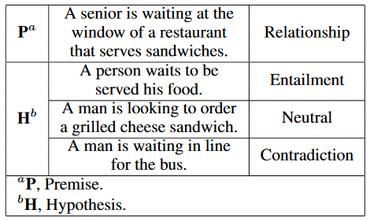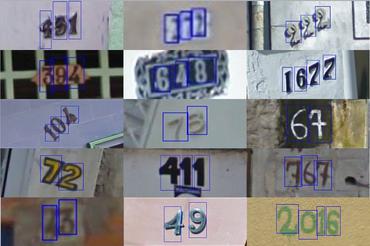Search Results for author: Dmitry Nikolaev
Found 30 papers, 11 papers with code
Beyond prompt brittleness: Evaluating the reliability and consistency of political worldviews in LLMs
no code implementations • 27 Feb 2024 • Tanise Ceron, Neele Falk, Ana Barić, Dmitry Nikolaev, Sebastian Padó
Due to the widespread use of large language models (LLMs) in ubiquitous systems, we need to understand whether they embed a specific worldview and what these views reflect.
Approximate Attributions for Off-the-Shelf Siamese Transformers
no code implementations • 5 Feb 2024 • Lucas Möller, Dmitry Nikolaev, Sebastian Padó
In this work, we reassess these restrictions and propose (i) a model with exact attribution ability that retains the original model's predictive performance and (ii) a way to compute approximate attributions for off-the-shelf models.
Improving Cross-Lingual Transfer through Subtree-Aware Word Reordering
1 code implementation • 20 Oct 2023 • Ofir Arviv, Dmitry Nikolaev, Taelin Karidi, Omri Abend
Despite the impressive growth of the abilities of multilingual language models, such as XLM-R and mT5, it has been shown that they still face difficulties when tackling typologically-distant languages, particularly in the low-resource setting.
Multilingual estimation of political-party positioning: From label aggregation to long-input Transformers
1 code implementation • 19 Oct 2023 • Dmitry Nikolaev, Tanise Ceron, Sebastian Padó
We carry out the analysis of the Comparative Manifestos Project dataset across 41 countries and 27 languages and find that the task can be efficiently solved by state-of-the-art models, with label aggregation producing the best results.
Investigating semantic subspaces of Transformer sentence embeddings through linear structural probing
1 code implementation • 18 Oct 2023 • Dmitry Nikolaev, Sebastian Padó
The question of what kinds of linguistic information are encoded in different layers of Transformer-based language models is of considerable interest for the NLP community.
An Attribution Method for Siamese Encoders
1 code implementation • 9 Oct 2023 • Lucas Möller, Dmitry Nikolaev, Sebastian Padó
Despite the success of Siamese encoder models such as sentence transformers (ST), little is known about the aspects of inputs they pay attention to.
Adverbs, Surprisingly
no code implementations • 31 May 2023 • Dmitry Nikolaev, Collin F. Baker, Miriam R. L. Petruck, Sebastian Padó
This paper begins with the premise that adverbs are neglected in computational linguistics.
Additive manifesto decomposition: A policy domain aware method for understanding party positioning
1 code implementation • 17 May 2023 • Tanise Ceron, Dmitry Nikolaev, Sebastian Padó
The workflow covers (a) definition of suitable policy domains; (b) automatic labeling of domains, if no manual labels are available; (c) computation of domain-level similarities and aggregation at a global level; (d) extraction of interpretable party positions on major policy axes via multidimensional scaling.
Representation biases in sentence transformers
no code implementations • 30 Jan 2023 • Dmitry Nikolaev, Sebastian Padó
Variants of the BERT architecture specialised for producing full-sentence representations often achieve better performance on downstream tasks than sentence embeddings extracted from vanilla BERT.
Word-order typology in Multilingual BERT: A case study in subordinate-clause detection
no code implementations • NAACL (SIGTYP) 2022 • Dmitry Nikolaev, Sebastian Padó
The capabilities and limitations of BERT and similar models are still unclear when it comes to learning syntactic abstractions, in particular across languages.
Fast matrix multiplication for binary and ternary CNNs on ARM CPU
no code implementations • 18 May 2022 • Anton Trusov, Elena Limonova, Dmitry Nikolaev, Vladimir V. Arlazarov
In this paper, we propose novel fast algorithms of ternary, ternary-binary, and binary matrix multiplication for mobile devices with ARM architecture.
On the properties of some low-parameter models for color reproduction in terms of spectrum transformations and coverage of a color triangle
no code implementations • 21 Oct 2021 • Alexey Kroshnin, Viacheslav Vasilev, Egor Ershov, Denis Shepelev, Dmitry Nikolaev, Mikhail Tchobanou
One of the classical approaches to solving color reproduction problems, such as color adaptation or color space transform, is the use of low-parameter spectral models.
On the Relation between Syntactic Divergence and Zero-Shot Performance
1 code implementation • EMNLP 2021 • Ofir Arviv, Dmitry Nikolaev, Taelin Karidi, Omri Abend
We explore the link between the extent to which syntactic relations are preserved in translation and the ease of correctly constructing a parse tree in a zero-shot setting.
Part of Speech and Universal Dependency effects on English Arabic Machine Translation
no code implementations • 1 Jun 2021 • Ofek Rafaeli, Omri Abend, Leshem Choshen, Dmitry Nikolaev
In this research paper, I will elaborate on a method to evaluate machine translation models based on their performance on underlying syntactical phenomena between English and Arabic languages.
SERRANT: a syntactic classifier for English Grammatical Error Types
1 code implementation • 6 Apr 2021 • Leshem Choshen, Matanel Oren, Dmitry Nikolaev, Omri Abend
SERRANT is a system and code for automatic classification of English grammatical errors that combines SErCl and ERRANT.
Illumination Estimation Challenge: experience of past two years
no code implementations • 31 Dec 2020 • Egor Ershov, Alex Savchik, Ilya Semenkov, Nikola Banić, Karlo Koscević, Marko Subašić, Alexander Belokopytov, Zhihao LI, Arseniy Terekhin, Daria Senshina, Artem Nikonorov, Yanlin Qian, Marco Buzzelli, Riccardo Riva, Simone Bianco, Raimondo Schettini, Sven Lončarić, Dmitry Nikolaev
The main advantage of testing a method on a challenge over testing in on some of the known datasets is the fact that the ground-truth illuminations for the challenge test images are unknown up until the results have been submitted, which prevents any potential hyperparameter tuning that may be biased.
Classifying Syntactic Errors in Learner Language
1 code implementation • CONLL 2020 • Leshem Choshen, Dmitry Nikolaev, Yevgeni Berzak, Omri Abend
We present a method for classifying syntactic errors in learner language, namely errors whose correction alters the morphosyntactic structure of a sentence.
ResNet-like Architecture with Low Hardware Requirements
1 code implementation • 15 Sep 2020 • Elena Limonova, Daniil Alfonso, Dmitry Nikolaev, Vladimir V. Arlazarov
In the paper, we introduce a bipolar morphological ResNet (BM-ResNet) model obtained from a much more complex ResNet architecture by converting its layers to bipolar morphological ones.
Fast Implementation of 4-bit Convolutional Neural Networks for Mobile Devices
no code implementations • 14 Sep 2020 • Anton Trusov, Elena Limonova, Dmitry Slugin, Dmitry Nikolaev, Vladimir V. Arlazarov
We introduce an efficient implementation of 4-bit matrix multiplication for quantized neural networks and perform time measurements on a mobile ARM processor.
Line detection via a lightweight CNN with a Hough Layer
no code implementations • 20 Aug 2020 • Lev Teplyakov, Kirill Kaymakov, Evgeny Shvets, Dmitry Nikolaev
Line detection is an important computer vision task traditionally solved by Hough Transform.
Accelerated FBP for computed tomography image reconstruction
no code implementations • 13 Jul 2020 • Anastasiya Dolmatova, Marina Chukalina, Dmitry Nikolaev
The classical direct implementations of this algorithm require the execution of $\Theta(N^3)$ operations, where $N$ is the linear size of the 2D slice.
Fine-Grained Analysis of Cross-Linguistic Syntactic Divergences
1 code implementation • ACL 2020 • Dmitry Nikolaev, Ofir Arviv, Taelin Karidi, Neta Kenneth, Veronika Mitnik, Lilja Maria Saeboe, Omri Abend
The patterns in which the syntax of different languages converges and diverges are often used to inform work on cross-lingual transfer.
SegBo: A Database of Borrowed Sounds in the World's Languages
no code implementations • LREC 2020 • Eitan Grossman, Elad Eisen, Dmitry Nikolaev, Steven Moran
Phonological segment borrowing is a process through which languages acquire new contrastive speech sounds as the result of borrowing new words from other languages.
Fast Implementation of Morphological Filtering Using ARM NEON Extension
no code implementations • 19 Feb 2020 • Elena Limonova, Arseny Terekhin, Dmitry Nikolaev, Vladimir Arlazarov
Experiments showed 3 times efficiency increase for final implementation of erosion and dilation compared to van Herk/Gil-Werman algorithm without SIMD, 5. 7 times speedup for 8x8 matrix transpose and 12 times speedup for 16x16 matrix transpose compared to transpose without SIMD.
Computational optimization of convolutional neural networks using separated filters architecture
no code implementations • 18 Feb 2020 • Elena Limonova, Alexander Sheshkus, Dmitry Nikolaev
This paper considers a convolutional neural network transformation that reduces computation complexity and thus speedups neural network processing.
A Document Skew Detection Method Using Fast Hough Transform
no code implementations • 5 Dec 2019 • Pavel Bezmaternykh, Dmitry Nikolaev
The majority of document image analysis systems use a document skew detection algorithm to simplify all its further processing stages.
A Method of Detecting End-To-End Curves of Limited Curvature
no code implementations • 4 Dec 2019 • Ekaterina Panfilova, Mikhail Aliev, Irina Kunina, Vasiliy Postnikov, Dmitry Nikolaev
In this paper we consider a method for detecting end-to-end curves of limited curvature like the k-link polylines with bending angle between adjacent segments in a given range.
Bipolar Morphological Neural Networks: Convolution Without Multiplication
no code implementations • 5 Nov 2019 • Elena Limonova, Daniil Matveev, Dmitry Nikolaev, Vladimir V. Arlazarov
To demonstrate efficiency of the proposed model we consider classical convolutional neural networks and convert the pre-trained convolutional layers to the bipolar morphological layers.
HoughNet: neural network architecture for vanishing points detection
no code implementations • 9 Sep 2019 • Alexander Sheshkus, Anastasia Ingacheva, Vladimir Arlazarov, Dmitry Nikolaev
We demonstrate its potential by solving the problem of vanishing points detection in the images of documents.
Linear colour segmentation revisited
2 code implementations • 2 Jan 2019 • Anna Smagina, Valentina Bozhkova, Sergey Gladilin, Dmitry Nikolaev
In this work we discuss the known algorithms for linear colour segmentation based on a physical approach and propose a new modification of segmentation algorithm.






